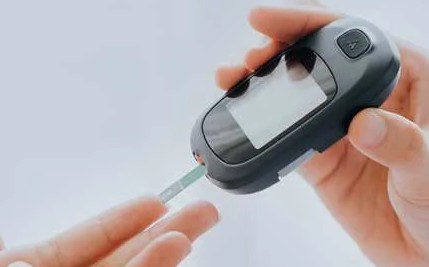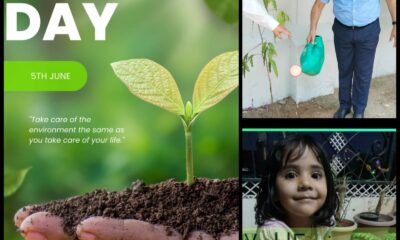Health
Data | People who are more knowledgeable about diabetes have a better probability of overcoming the condition
Published
1 year agoon

No matter how wealthy they are, a person’s chances of beating the condition increase with their level of diabetes awareness.
Diabetes is frequently called a disease of the wealthy. Studies have also shown that diabetes is frequently brought on by changes in lifestyle, such as sedentary employment and unhealthful eating habits. This theory is supported by data from the National Family Health Survey-5, which was conducted between 2019 and 2021. In India, the poorest 20% of households had the lowest percentage of people with high random blood glucose levels, whereas the richest 20% had the greatest percentage.
The percentage of women in India across wealth quintiles who were not taking diabetic medication or had a random blood glucose level that was >140 mg/dl is shown in Chart 1A. 20% of a population is represented by one quintile. The percentage of women in India across wealth quintiles who were either taking medication to treat their diabetes or had a random blood glucose level >140 mg/dl is shown in Chart 1B.
The illness of the rich and famous is diabetes. Studies also reveal that diabetes is frequently brought on by changes in lifestyle, such as sedentary employment and bad food habits. This theory is supported by the results of the National Family Health Survey-5, which was conducted between 2019 and 2021. In India, the poorest 20% of households had the lowest
percentage of people with high random blood sugar levels, whereas the richest 20% had the greatest percentage.
The percentage of women in India’s population, according to wealth quintiles, who were neither taking medication to control their diabetes nor had a random blood glucose level higher than 140 mg/dl. 20% of a population is represented by one quintile. In quintiles of wealth, Chart 1B displays the proportion of women in India who were either taking medication
to control their diabetes or had a random blood glucose level that was greater than 140 mg/dl.
Although the graphs supported the theory that diabetes is more common among the wealthy, there wasn’t much of a disparity between the richest and poorest people. 17% of women in the wealthiest 20% of the population were either using medication to treat their diabetes or had blood sugar levels higher than 140 mg/dl. The equivalent number for the lowest
20% was 10.6%; there was just a six-percentage-point difference.
Read Also – Outdoor air pollutants are linked to asthma attacks in Children and teens, according to a new study
While a person’s wealth determines the likelihood of developing diabetes, another important factor is their level of knowledge about the condition. According to statistics, a woman has a lower risk of developing diabetes the more years she spends in school, and the opposite is also true.
The percentage of women in India throughout all educational years who were neither taking medication to treat their diabetes nor had a random blood glucose level greater than 140 mg/dl is shown in Chart 2a. The percentage of women in India who were either taking medication to treat their diabetes or had a random blood glucose level >140 mg/dl in the
years they finished high school is shown in Chart 2b.
17.4% of women with less than one year of education were either using medication to treat their diabetes or had blood sugar levels higher than 140 mg/dl. The percentage was 19.1% for women who had finished less than five years of education. This figure was just 8.4% among women who had finished more than eleven years of education, a 9% to 10% point difference.
As a result, the amount of awareness has a considerably better influence in the occurrence of diabetes than does an individual’s wealth. The average number of years spent in school increases with income, as indicated in Table 3, which only supports the aforementioned finding. In other words, regardless of income level, a person who is more aware of diabetes
has a better chance of defeating the disease.
This correlation between education and diabetes incidence was stronger in southern states with a higher prevalence of the condition. The percentage of women in each state who were either using medication to treat their diabetes or had blood sugar levels higher than 140 mg/dl is shown in Chart 4.
Only 8.3% of women in Kerala had finished more than eleven years of education. While the share was 22% among individuals who only completed 5-7 years of education.
If a person’s random blood glucose level was between 141 and 160 mg/dL, the NFHS labels them as having high blood sugar; if it was more than 160 mg/dL, they are classified as having very high blood sugar. The usual range is under 140.
You may like
-


The Nagar Nigam of Greater Jaipur is organising a major festival called the Yoga Mahotsav in 2024
-


Research Links Heart Disease Death Risk To Intermittent Fasting
-


Protect, Preserve and prosper:Go green In DAV Centenary Public School
-


the “108 ambulance” scam
-


The origins of same-sex marriage.
-


World Liver Day 2023

